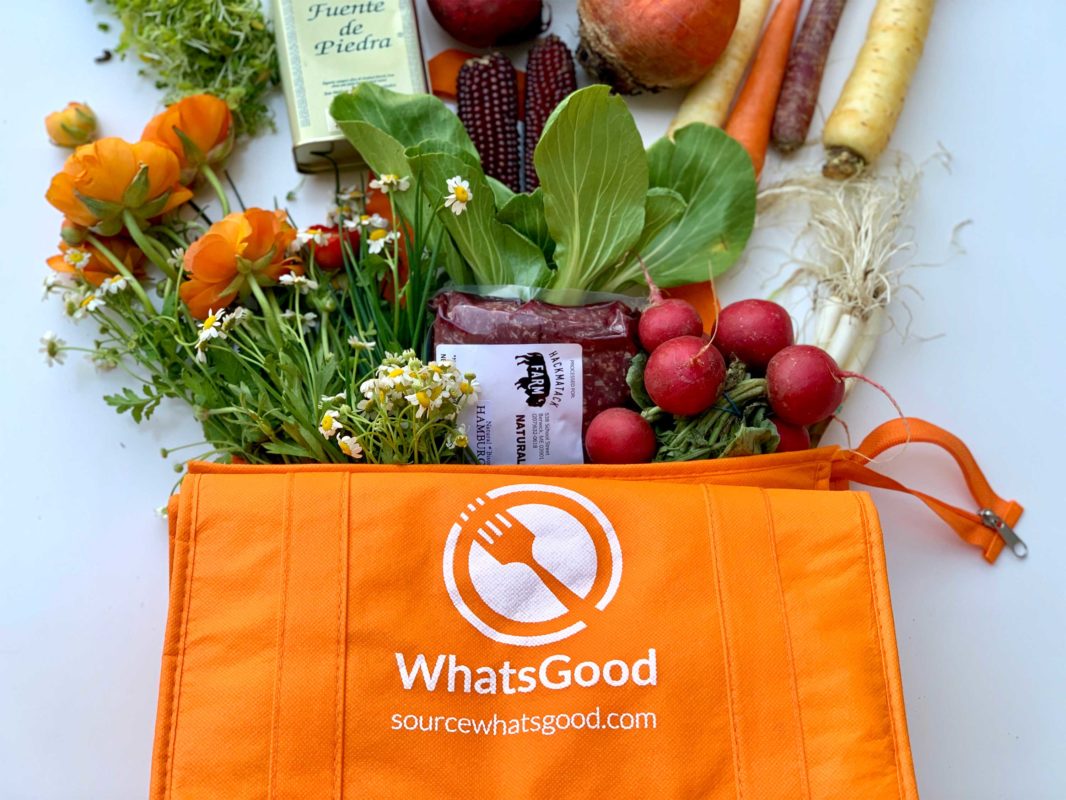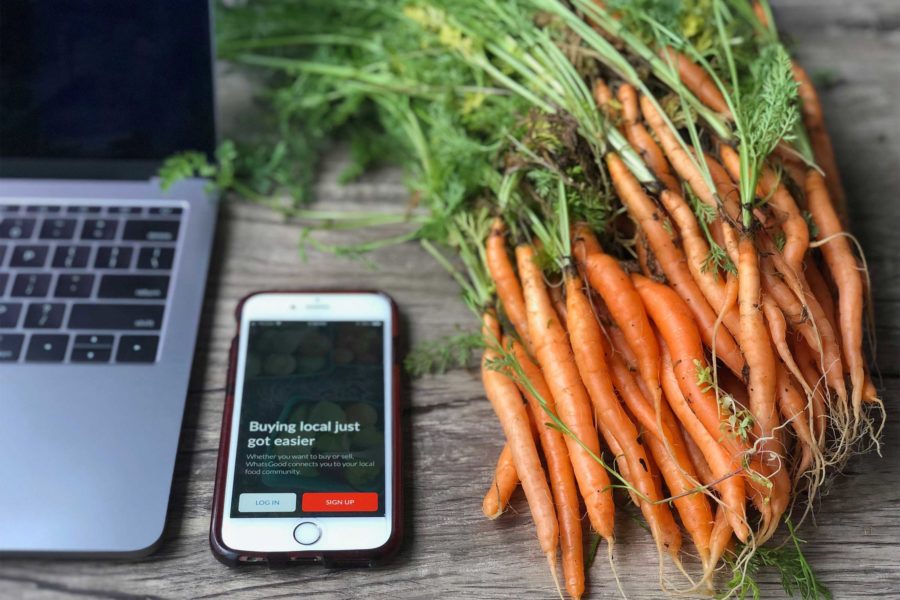As consumers, we demand a lot from a service, product or business, especially when it comes to the food we eat every day — for good reason.
We want it fresh. We want to support local producers. And, we want it conveniently delivered to us at our doorstep. With grocery delivery services such as AmazonFresh or Boston Organics, and meal kit services such as Blue Apron and The Foodery, we’re not short of options.
Now, there’s a new player in town.
Providence, R.I.-based WhatsGood is a virtual farmers market app that expanded to the Boston area in June. Customers can shop for produce, meats, dairy, sauces and more straight from local farmers and producers. The best part, it’s all delivered in one single package.
“As much as consumers are demanding better food at restaurants, there is even more demand for better local food in their own kitchens,” says Erin Tortora, co-founder and director of resources at Crave Food Systems, the app’s parent company.
Customers can place orders up until 8 p.m. The following day, items are transported from farms to the Boston WhatsGood aggregation site (currently at Fenway Community Center), and then dispatched by WhatsGood delivery team members to customers.
“The consumer will receive the freshest product available,” says Tortora. “We’ll never have warehouses or long wait times for placing orders.”
Boston foodies can choose from a growing number of local vendors on the WhatsGood app. There are 11 at publication date. They can select home delivery or pick-up from six different local spots without having to commit to a subscription or fulfill an order minimum.

Courtesy WhatsGood
Erin Tortora, co-founder of WhatsGood
An Idea Blossoms
Crave Food Systems has come a long way from its start in 2015.
It began by providing its food technology to various farmers market organizations across the country. It then relaunched WhatsGood as a delivery system. As it expands its reach, it aims to disrupt the food ecosystem for both producers and consumers.
The whole idea started in Tortora’s dining room with her co-founder and husband Matt, and co-founder Will Araújo. They first formulated it as a way to help chefs gain access to a wholesale platform for locally produced food.
Matt, being a chef himself, loved using fresh and local ingredients in his dishes. However, he was frustrated at the fragmented way he had to contact each food producer to get his goods.
Araújo was working in the restaurant kitchen at the time, as well, but he had skills in technology and business development. He helped create the technology that Crave uses to bring thousands of farmers and hundreds of farmers markets online.
For her part, Tortora served in the U.S. Navy as a supply officer with experience in food service, procurement, supply chain and logistics. It’s the type of experience she now provides for the WhatsGood team.
“I wear many hats, from HR to finance to partnerships to helping out with deliveries, when needed,” she says.
When they first launched their technology platform, the team began learning more and more about the end user — the consumer — and what they wanted. Two years ago, they launched WhatsGood as a retail platform in Rhode Island that allowed customers to pre-order goods at their local farmers markets.
“But that didn’t solve the issue of eliminating market times and availability of the consumer to go to the market,” says Tortora. “So delivery was the next natural step.”

Courtesy WhatsGood
WhatsGood is the Boston-area’s first virtual farmers market
What You Get
Today, WhatsGood features almost 30 Rhode Island farms on its platform that users can shop for fresh products.
So, what then makes WhatsGood different from grocery store delivery services?
“We demand transparency in the marketplace,” says Tortora. “If you go into a store, you don’t know where the product comes from.”
In addition to knowing exactly who produced their food and where they are located, customers can also directly contact the farmer if they have any specific questions about a product.
“Consumers want variety and WhatsGood has multiple sources of various products. If you go to your farmers market, there is usually a single source for a specific product like protein. That is challenging. Especially if they run out of your favorite product fast,” says Tortora.
The Future for WhatsGood
Beyond the convenience and ease of shopping local online, the WhatsGood team has a big vision for their place in the food industry. Like, helping small farmers compete against big producers.
“We give small farmers and producers tools and resources that Big Food seems to have infinite access to, including technology, delivery capability and marketing,” Tortora says.
WhatsGood is also hoping to move the local food industry from a farm-centric model to a consumer-centric model, which, contrary to what it sounds like, could benefit both parties.
“Currently farmers grow what they think we want and what’s possible for them to grow. They push that inventory out,” says Tortora. “But now, we have collected data on what consumers actually want and what products are selling out consistently.”
According to Tortora, farmers and producers can utilize this data to inform and streamline their production practices.
The company’s reach has expanded across the country. “We have the largest live inventory of farms and products that exist in the U.S.,” says Tortora. “Our technology serves markets from Maine all the way to Oregon, Southern California and Louisiana.
Tortora and her team are passionate about pulling up the blinds that shielded the consumers’ view of the farmers producing their food.
“The most important thing to all humans, that you have to do three times a day,” says Tortora, “you should do it well and in a sustainable way. You should care about what you’re eating, how it was produced and who produced it.”



 4 min read
4 min read


